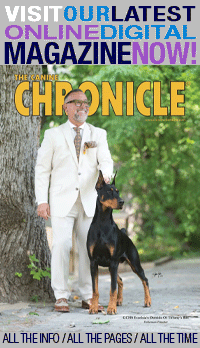The Advantage of Branding
By Amy Fernandez

Surviving in New York gets you into the habit of seeing changes as opportunities. It’s hard to put a positive spin on Hurricane Sandy, but it effectively focused attention on New York dogs and cats. They not only became a top priority for donations and help, they got their own brand, Sandypets!
Reporters descended on Long Island and the Jersey coast seeking news from the trenches. The media attention didn’t translate into a Powerball win for small, local shelters in these decimated areas, but it helped. They used their facetime to broadcast requests for supplies, volunteers, and donations – and advertise their adoptable pets. Sandy didn’t really alter their welfare or prospects. Despite that, many reports implied that they faced immediate euthanasia to make way for droves of abandoned pets filling shelters after the storm.
Sandy trashed New York and destroyed many homes, but no one was forced to abandon their pets. Over 300 of them accompanied their owners to evacuation shelters. Many displaced residents arranged temporary foster care for pets through Facebook and Twitter. Several shelters received donations and volunteers to provide free temporary boarding. The biggest was a half million dollar gift from Rachel Ray used to convert a vacant Bed Sty warehouse into a temporary free boarding facility for Sandypets. It can accommodate 700 animals, and so far, I believe it holds about 150. And many of those owners needed strenuous convincing to leave their pets in the facility. In fact, in my opinion, New York’s displaced pets are faring better than many of their owners who have run out of temporary housing options as winter approaches.
Much of this generosity is traceable to the highly publicized plight of homeless animals after Katrina. It spawned waves of dramatic news stories, books, and several fundraising scandals. It also, in my opinion, established a solid market for disaster rescue pets.
To my knowledge, approximately 40 stray dogs and cats were rounded up after Sandy. They are currently held at a new deluxe Brooklyn facility while volunteers continue searching for their owners. If that fails, local foster homes await them. Hopefully, they will be reunited with their owners, but it’s quite possible that some will eventually need rehoming. But the supply will never add up to the 15 thousand homeless pets after Katrina.
So, local shelters did the sensible thing. On November 17th, 60 of their animals made headlines as the first Superstorm Sandy refugees shipped to the Helen Woodward Animal Center in San Diego. It garnered prime publicity for Southwest Airlines who donated the flight and Seaworld animal handlers who escorted them. BP footed the fuel bill – and they certainly need positive PR right now.
However, several reports suggested a more dramatic backstory. Technically, they were here during the storm, so they qualify as Sandypets. Possibly, this is not the most ethical slant, but if it encourages adoption, what’s the harm? These jankety NY refugees will get a good life in Southern California.
In my opinion, rescues and shelters have discovered the value of gimmicks to lure customer traffic and hype has become the byword for successful pet adoption. Katrina also created a business model for fundraising that has been perfected by major animal charities like HSUS. Before Sandy left town HSUS was soliciting text donations for their Humane Society Disaster Relief Fund. But Twitter and Facebook followers quickly noted the Humane Society attempt at rebranding by posting links to HSUS watchdog groups. Branding instills customer confidence. But the flipside of consumer recognition is a great big target for customer dissatisfaction.
Short URL: http://caninechronicle.com/?p=12434
Comments are closed












